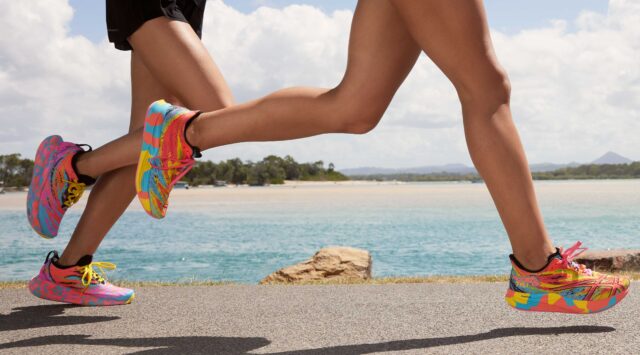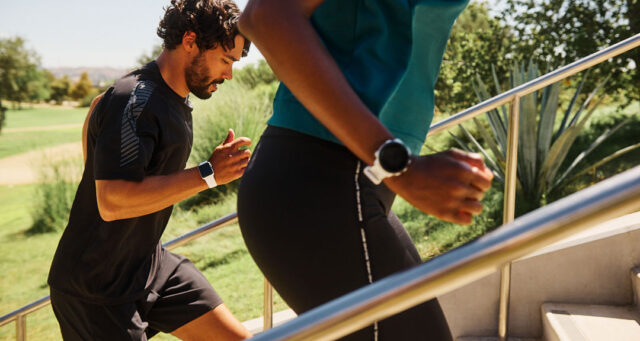Warm-ups and cool-downs are both wildly underrated (and under-practiced) parts of running. Any professional runner, running coach, personal trainer, and even physical therapist will tell you that warm-ups are essential—they wake up your muscles and get them ready for the work you’re about to do—and cool-downs are equally important—they bring your body back to its regular state and signal that it’s time to recover.
Runners often skip warm-ups and cool-downs, sometimes because they don’t want to put aside the time, other times because they aren’t in the mood. We’ve all been there, but devoting even five minutes to warming up and cooling down can make a major difference in your performance and your recovery.
Here’s how we recommend warming up before a run and cooling down afterward.
The warm-up
Step 1: First, go for a walk or light jog
During your warm-up, it’s important to activate the muscles you’re going to use on the run—and going for a walk or light jog will set that process in motion. Depending on how much time you have, a 5 to 10-minute walk or easy jog is ideal, but if you only have five minutes total to warm up, dedicate a minute to this and gradually pick up your pace over those 60 seconds. The goal is to get your heart rate up a bit and encourage circulation.
Step 2: Do some basic stretching
Running requires a lot of muscles, but at the very least, your warm-up should engage your hips, glutes, ankles, and calves. There’s no need to do backbends or push your range of motion to its limits. This stretching should be light and manageable. A few of my go-to stretches are:
- Standing calf stretch
- Standing quad stretch
- Triangle hamstring stretch
- Runner’s lunge
- Glute/hip bridge
- Ankle circles (rotate your ankle in a circle clockwise, and then counterclockwise)
I do each of these stretches for 10 to 15 seconds or whatever feels good, depending on which muscles feel tight that day. (That’s 10 to 15 seconds on each side, for the exercises that are single leg.)
Step 3: Finally, engage in a few plyometrics
Plyometrics are aerobic exercises, meaning they get your heart pumping, and doing them before a run can help you increase your speed and strength. Unlike static stretching, plyometrics are usually done on the move, but if you don’t have a lot of space to work with, you can do them standing in place, too. Here’s an example of a five-minute plyometrics sequence:
- High knees for one minute (standing in place or moving forward)
- Butt kicks for one minute (standing in place or moving forward)
- Walking lunges with a torso rotation for one minute (can be done in place)
- Squats for one minute (go slow and stay in control, this isn’t a workout!)
- Skip for one minute (like you would as a kid! Skip in place or moving forward, striving for height on each jump)
Remember, this is a warm-up, not a workout. You aren’t looking to surpass your current capabilities.
The cool-down
Step 1: Walk it out
This step is straightforward and simple. After you finish running, resist the urge to stop dead in your tracks—this can cause your muscles to contract and blood to pool in your lower body. Instead, keep your body moving by walking. Walk for 5 to 10 minutes, allowing your heart rate to come down and your body to readjust. This is especially important if you’re a long-distance runner.
Step 2: Stretch again
Once your body has had a chance to recoup, spend a few minutes stretching. If a certain muscle feels tight—maybe your calf seized up during the run—start with that. It’s a good idea to stretch all the major muscle groups in your body (running is a full-body workout), but pay special attention to your quadriceps, hip flexors, and calves. Some runners like to foam roll after running, which can promote circulation and kickstart recovery.
Step 3: Refuel
Finally, make sure you are refueling your body in a timely manner—that means protein, carbohydrates, and plenty of water after your run. It can be tempting to forgo food and drink post-run—sometimes my stomach is unsettled after a long run, and food doesn’t sound appealing—but doing so only delays the recovery process and can leave you more sore and fatigued in the hours and days following. Your body needs protein to rebuild your muscles and carbohydrates to replenish your glycogen stores. The last step is to be proud of yourself, you’ve done the work! And now that you’ve cooled down, your body has time to heal and to prepare you for the next run.
Please note: This blog is not intended to be a substitute for professional medical advice, diagnosis, or treatment. Always seek the advice of your physician or other qualified health provider with any questions you may have regarding a medical condition.






